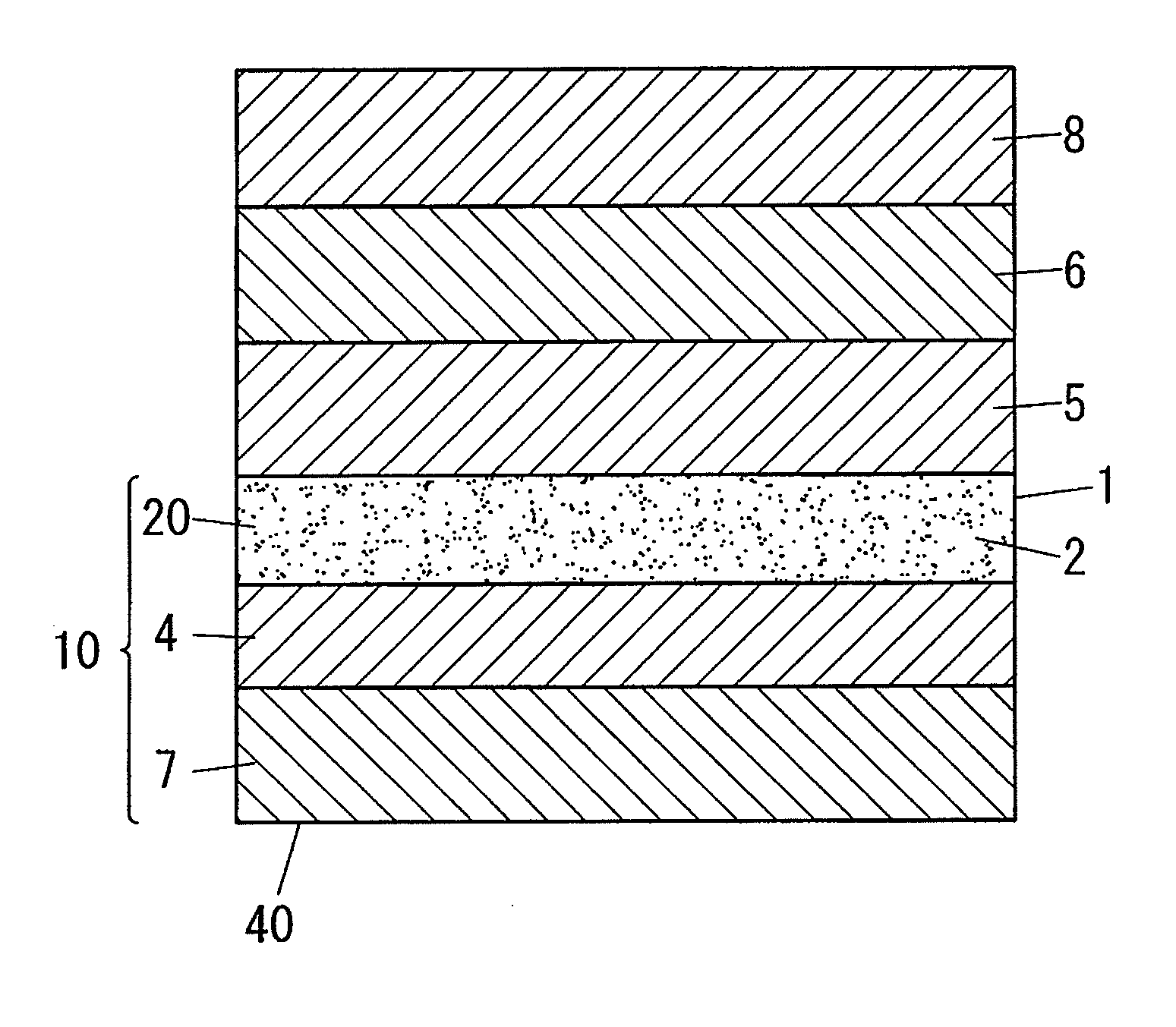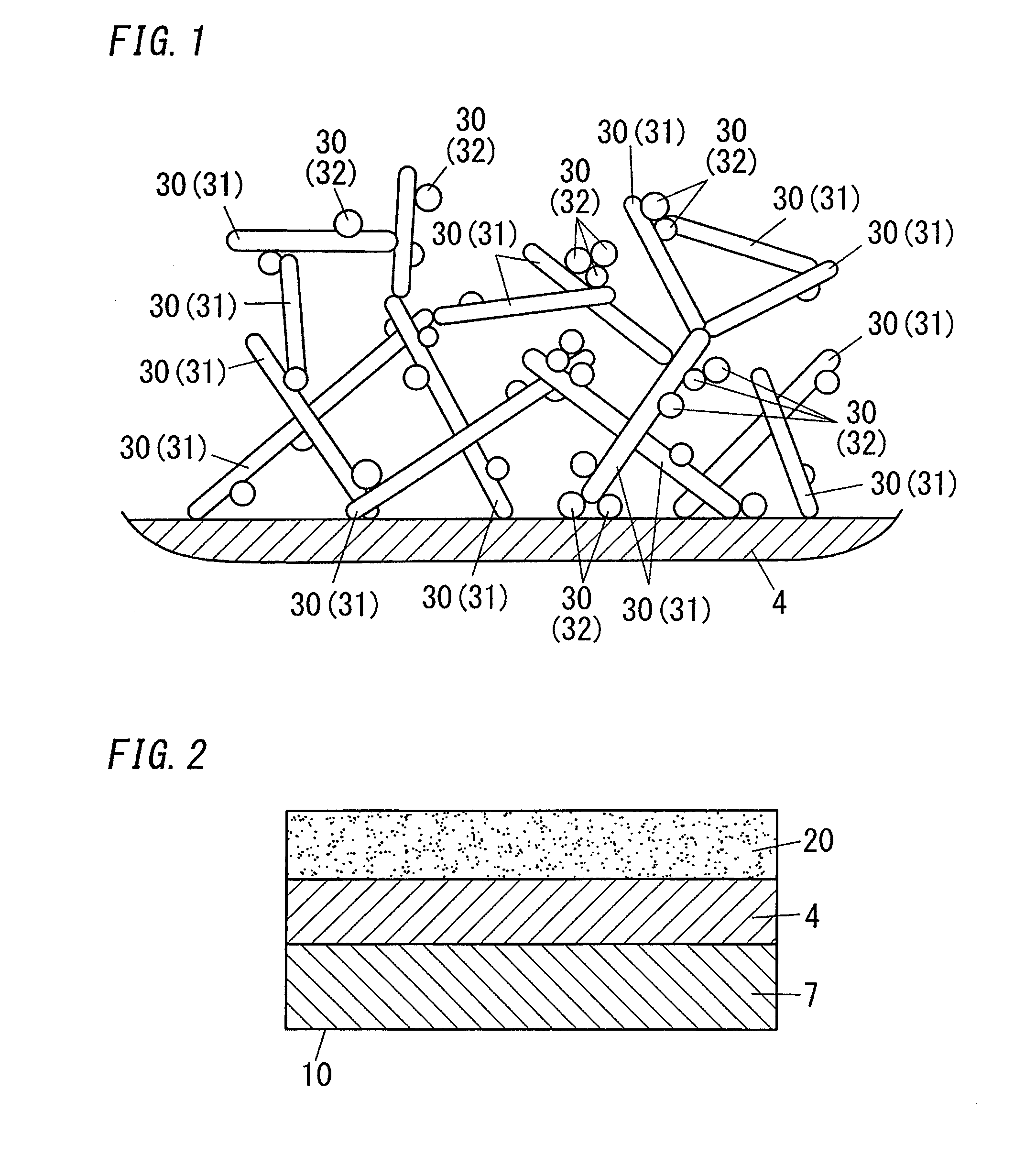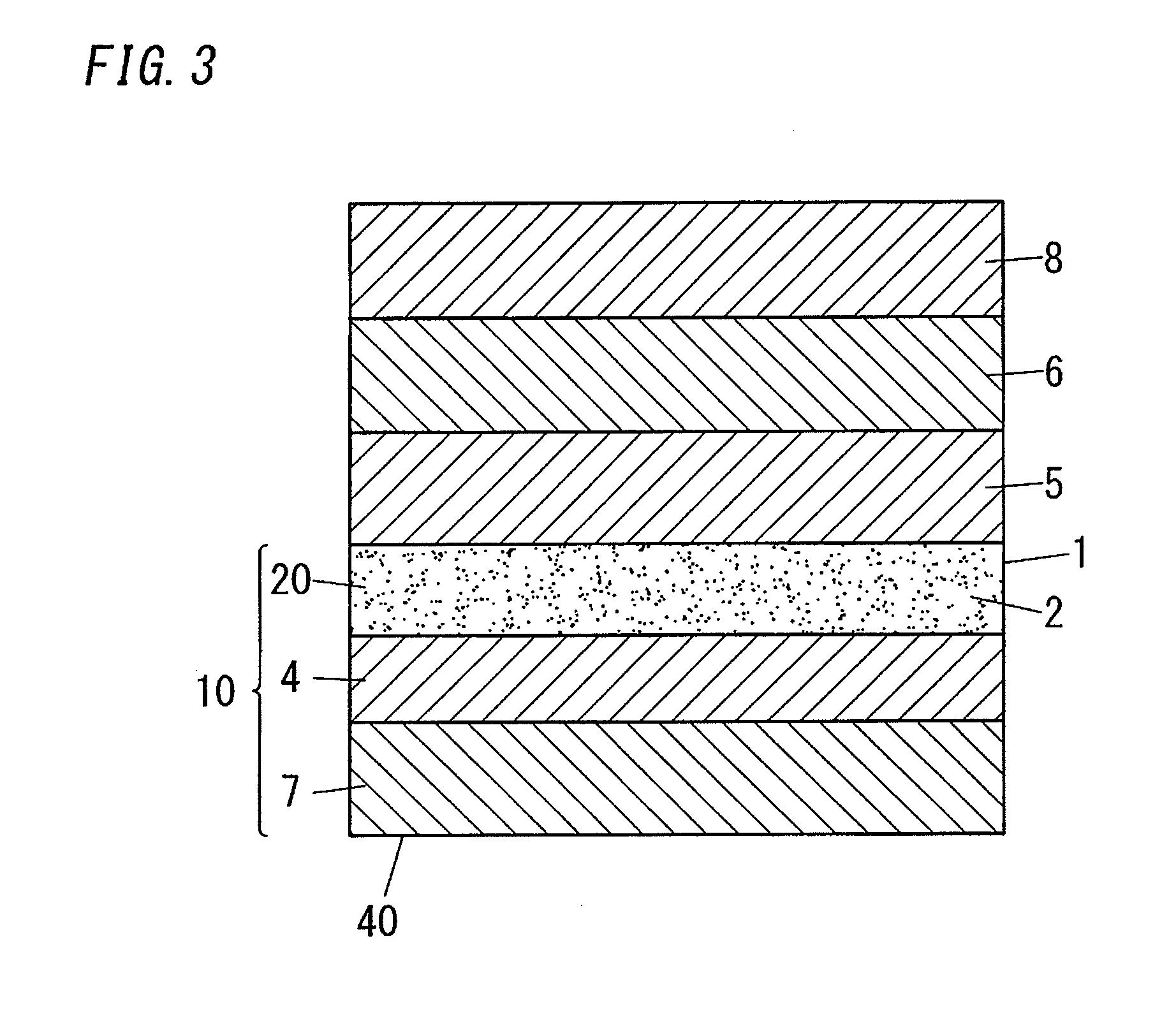Electrode composite and photoelectric element equipped therewith
a technology of photoelectric elements and composites, which is applied in the direction of electrolytic capacitors, thermoelectric devices, capacitors, etc., can solve the problems that the technique described in the patent literature 1 should not improve the conversion efficiency, interfere with electron transfer, etc., and achieve high electron transport properties, large area, and high electron transport properties
- Summary
- Abstract
- Description
- Claims
- Application Information
AI Technical Summary
Benefits of technology
Problems solved by technology
Method used
Image
Examples
example 1
[0145]An electrically conductive glass substrate having a thickness of 0.7 mm and a sheet resistance of 100 Ω / sq. was prepared. The electrically conductive glass substrate includes a glass substrate and a coating film of fluorine-doped SnO2 stacked on a face of the glass substrate. The glass substrate and the coating film of the electrically conductive glass substrate are a first substrate and a first electrode, respectively.
[0146]Mixing 10 ml of dispersion liquid containing 30 wt % acicular antimony trioxide (ATO) particles in methyl ethyl ketone, 3 g of indium-tin oxide (ITO) paste, and a binder (methyl methacrylate polymer; PMMA) prepared a mixed liquid. The mixed liquid contains acicular ATO particles, spherical ITO particles, and PMMA in a mass ratio of 30:30:40. The acicular ATO particles have an average major axis length of 0.14 μm and an average minor axis length of 0.015 nm. The spherical ITO particles have an average particle size of 20 nm.
[0147]The mixed liquid was applie...
examples 2 and 3
[0148]An electrode composite was obtained in the same condition as in Example 1 except that the ratio of the acicular ATO particles, the spherical ITO particles, and PMMA in the mixed liquid for forming the conductive particle layer was changed as shown in Table 1.
example 4
[0149]An electrode composite was obtained in the same condition as in Example 1 except that the acicular ATO particles were replaced with acicular indium-tin oxide (ITO) particles having an average major axis length of 700 nm and an average minor axis length of 68 nm.
PUM
| Property | Measurement | Unit |
|---|---|---|
| pore size | aaaaa | aaaaa |
| length | aaaaa | aaaaa |
| particle size | aaaaa | aaaaa |
Abstract
Description
Claims
Application Information
 Login to View More
Login to View More - R&D
- Intellectual Property
- Life Sciences
- Materials
- Tech Scout
- Unparalleled Data Quality
- Higher Quality Content
- 60% Fewer Hallucinations
Browse by: Latest US Patents, China's latest patents, Technical Efficacy Thesaurus, Application Domain, Technology Topic, Popular Technical Reports.
© 2025 PatSnap. All rights reserved.Legal|Privacy policy|Modern Slavery Act Transparency Statement|Sitemap|About US| Contact US: help@patsnap.com



